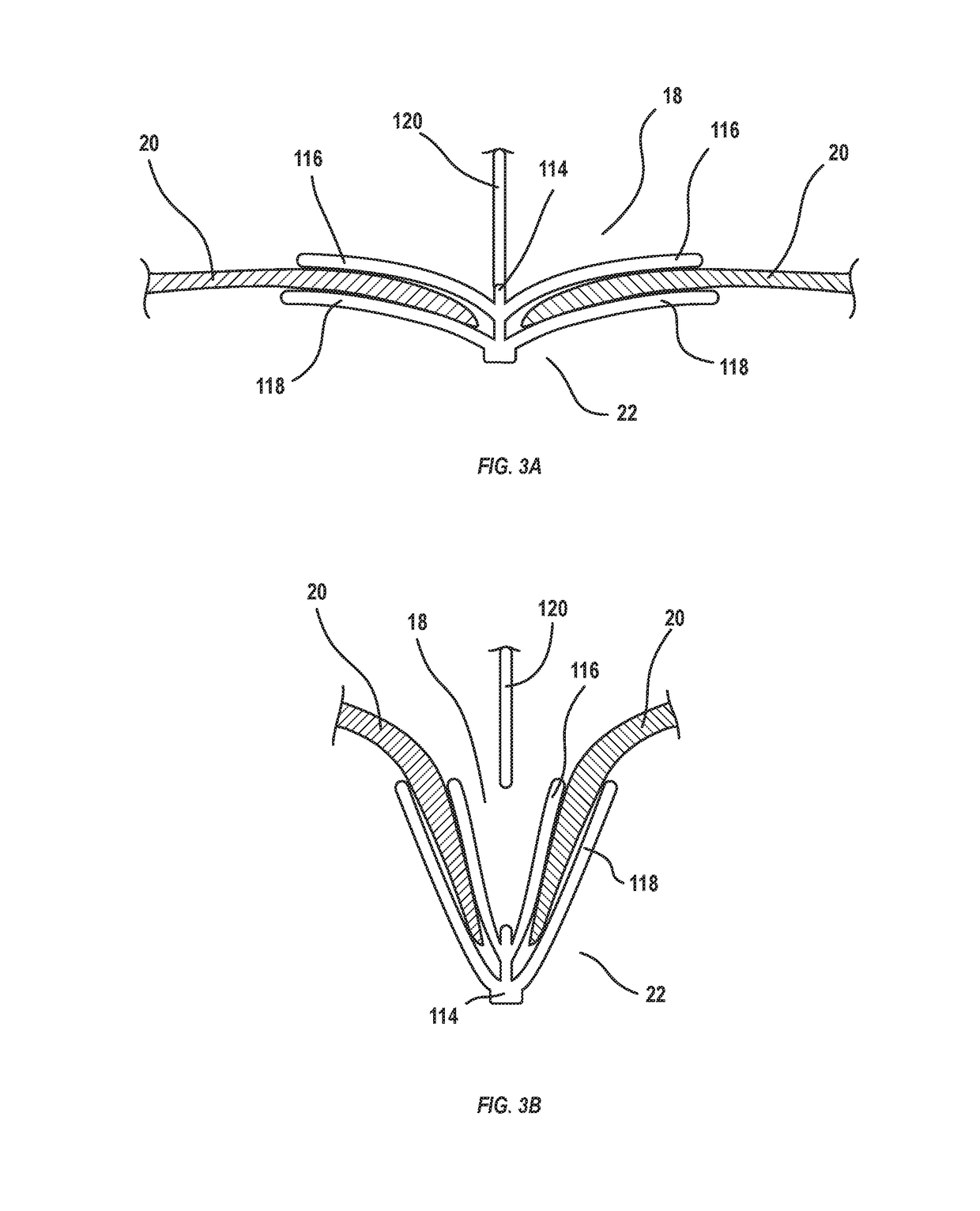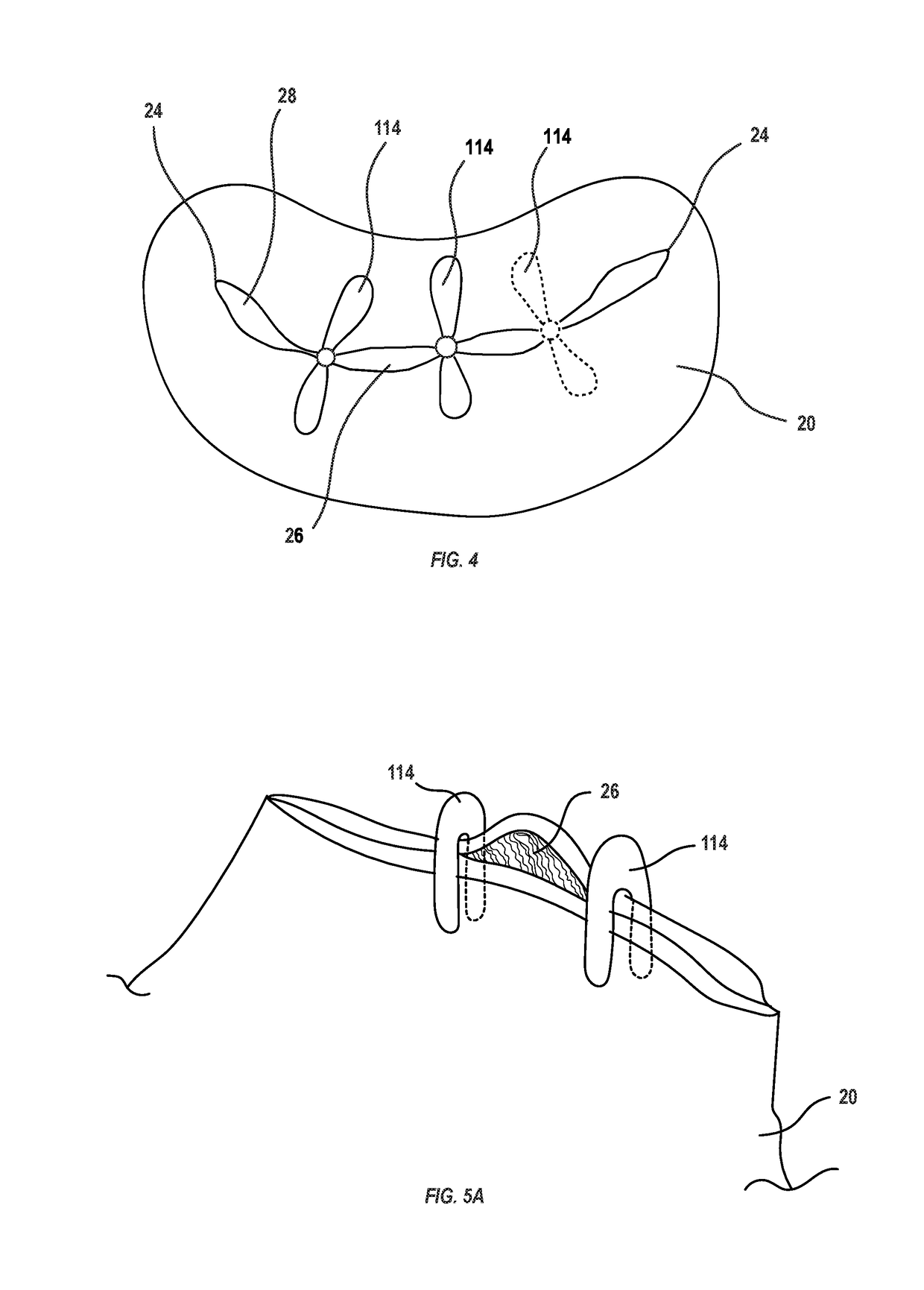Tissue compression device for cardiac valve repair
a compression device and valve technology, applied in the field of tissue compression devices for cardiac valve repair, can solve the problems of insufficient space for deployment of another conventional clip, insufficient space for the required articulation, etc., and achieve the effect of increasing the size of the interior spa
- Summary
- Abstract
- Description
- Claims
- Application Information
AI Technical Summary
Benefits of technology
Problems solved by technology
Method used
Image
Examples
Embodiment Construction
Introduction
[0031]The present disclosure is directed to devices, systems, and methods for treating regurgitant leaks in cardiac valve tissue, including leaks along the cardiac valve line of coaptation. In some implementations, interventional device embodiments described herein may be deployed at gaps disposed between two previously deployed implants, or between a previously deployed implant and a valve commissure. The interventional devices may be deployed to apply a tensioning force along the line of coaptation and / or to compress captured leaflet tissue along a line orthogonal to the line of coaptation to assist in closing a targeted gap and reducing regurgitant flow through the gap.
[0032]Throughout this disclosure, many examples are described in the context of guiding a delivery system to a mitral valve. One of skill in the art will understand, however, that the described components, features, and principles may also be utilized in other applications. For example, at least some of...
PUM
 Login to View More
Login to View More Abstract
Description
Claims
Application Information
 Login to View More
Login to View More - R&D
- Intellectual Property
- Life Sciences
- Materials
- Tech Scout
- Unparalleled Data Quality
- Higher Quality Content
- 60% Fewer Hallucinations
Browse by: Latest US Patents, China's latest patents, Technical Efficacy Thesaurus, Application Domain, Technology Topic, Popular Technical Reports.
© 2025 PatSnap. All rights reserved.Legal|Privacy policy|Modern Slavery Act Transparency Statement|Sitemap|About US| Contact US: help@patsnap.com



